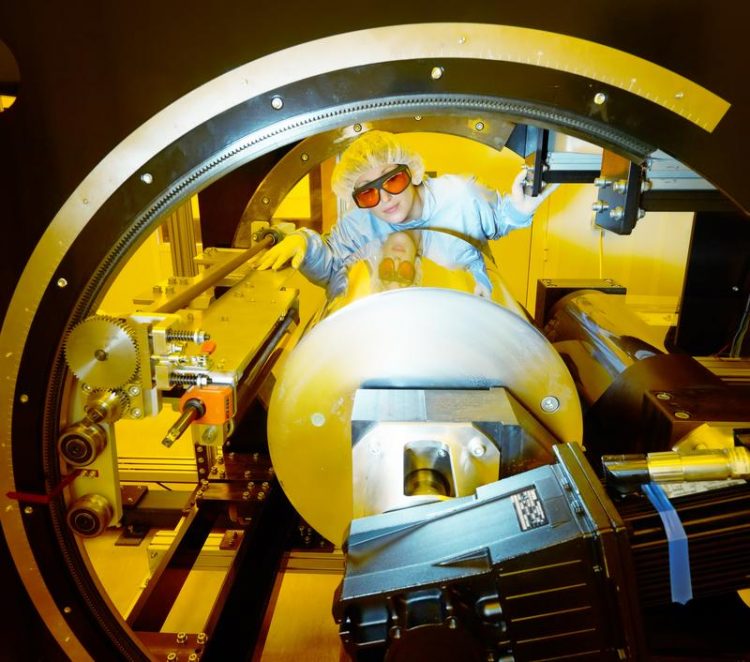One-step printing for transparent, conductive and patterned coatings in flexible touchscreens

One-step printing process provides cost-efficient conductive coatings for flexible touchscreens Copyright: Uwe Bellhäuser, only free when reporting on the INM.
Mobile phones and smart phones still haven‘t been adapted to the carrying habits of their users. That much is clear to anyone who has tried sitting down with a mobile phone in their back pocket: the displays of the innumerable phones and pods are rigid and do not yield to the anatomical forms adopted by the people carrying them.
By now it is no longer any secret that the big players in the industry are working on flexible displays. How to produce cost efficient suitable coatings for that will be demonstrated by the developments of the INM – Leibniz Institute for New Materials at the International Nanotechnology Exhibition and Conference nano tech 2016, Tokyo, Japan.
From January 27 to 29, the researchers of the INM will be presenting their results at the German Area, Booth 5J-17.
The INM will be presenting new nanoparticle inks, using transparent, conductive oxides (TCO`s). They are suitable for a one-step printing process on thin plastic foils. Thus transparent lines and patterns were obtained by direct gravure printing, which are electrically conductive even after bending.
Conductive coatings with TCOs are usually applied by means of high vacuum techniques, as sputtering. For patterning of the TCO coatings additional process steps as photolithographic and etching process steps are necessary. They are cost-intensive, in contrast to a one-step printing process, which is enabled by using the new developed TCO inks.
“We use the TCOs to produce nanoparticles with special properties”, says Peter William de Oliveira, Head of the Optical Materials Program Division, “the TCO ink is then created by adding a solvent and a special binder to these TCO particles.” The binder performs several tasks here: it not only makes the TCO nanoparticles adhere well on the film; it also increases the flexibility of the TCO coating.
In this way, the conductivity is maintained even when the films are bent. The ink can then be applied to the film directly by gravure printing using a printing plate. After curing under UV light at low temperatures less than 130°C, the coating is ready.
The transparent electronic inks allow conductor tracks to be produced unproblematically even on a large-scale by means of the classic reel-to-reel process. Initial trials at INM have been promising. The researchers all agree that the use of structured rollers will in the future allow even large, structured conductive surfaces to be printed with a high throughput at low cost.
Media Contact
All latest news from the category: Materials Sciences
Materials management deals with the research, development, manufacturing and processing of raw and industrial materials. Key aspects here are biological and medical issues, which play an increasingly important role in this field.
innovations-report offers in-depth articles related to the development and application of materials and the structure and properties of new materials.
Newest articles

First-of-its-kind study uses remote sensing to monitor plastic debris in rivers and lakes
Remote sensing creates a cost-effective solution to monitoring plastic pollution. A first-of-its-kind study from researchers at the University of Minnesota Twin Cities shows how remote sensing can help monitor and…

Laser-based artificial neuron mimics nerve cell functions at lightning speed
With a processing speed a billion times faster than nature, chip-based laser neuron could help advance AI tasks such as pattern recognition and sequence prediction. Researchers have developed a laser-based…

Optimising the processing of plastic waste
Just one look in the yellow bin reveals a colourful jumble of different types of plastic. However, the purer and more uniform plastic waste is, the easier it is to…



